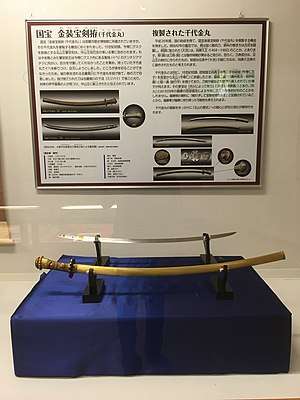Hananchi
Hananchi (攀安知, d. 1416) was the third and last chief[1] of the Okinawan kingdom of Hokuzan.

He became chief in 1397, upon the death of his father. He sent missions to Korea announcing his succession, and to China seeking investiture and recognition as ruler of all of Okinawa.[2] He was the most active of all kings of Hokuzan in diplomacy and trade with China, sending 14 tribute missions.[3]
Hananchi is said to have had great military prowess, but to have relied too much on his personal strength and skill, to the detriment of his relationship with his retainers. In 1416, a number of his retainers, notably Gosamaru, defected to Chūzan. Shō Hashi, chief of Chūzan, invaded Hokuzan and defeated Hanachi's army at Nago Castle. When his home castle of Nakijin Castle came under attack, the attackers were kept at bay for a time, as the castle itself was quite strong. However, Hananchi was betrayed by a retainer, Motobu Taihara, who opened the gates and allowed Shō Hashi's forces in. Defeated, Hananchi committed suicide.[3]
References
- George H. Kerr. (2000). Okinawa: The History of an Island People, p. 52 , p. 52, at Google Books; although the paramount leaders of Okinawa beginning with Shunten (c. 1166 – c. 1237) are commonly identified as "kings," Kerr observes that "it is misleading to attribute full-fledged 'kingship' to an Okinawan chief in these early centuries... distinctly individual leadership exercised through force of personality or preeminent skill in arms or political shrewdness was only slowly replaced by formal institutions of government — laws and ceremonies — supported and strengthened by a developing respect for the royal office."
- Kerr, George. Okinawa: The History of an Island People. Tokyo: Tuttle Publishing, 2000. p82.
- "Hananchi." Okinawa rekishi jinmei jiten (沖縄歴史人名事典, "Encyclopedia of People in Okinawan History"). Naha: Okinawa Bunka-sha, 2002. p64.
| Preceded by Min |
Chief of Hokuzan 1397–1416 |
Succeeded by None |